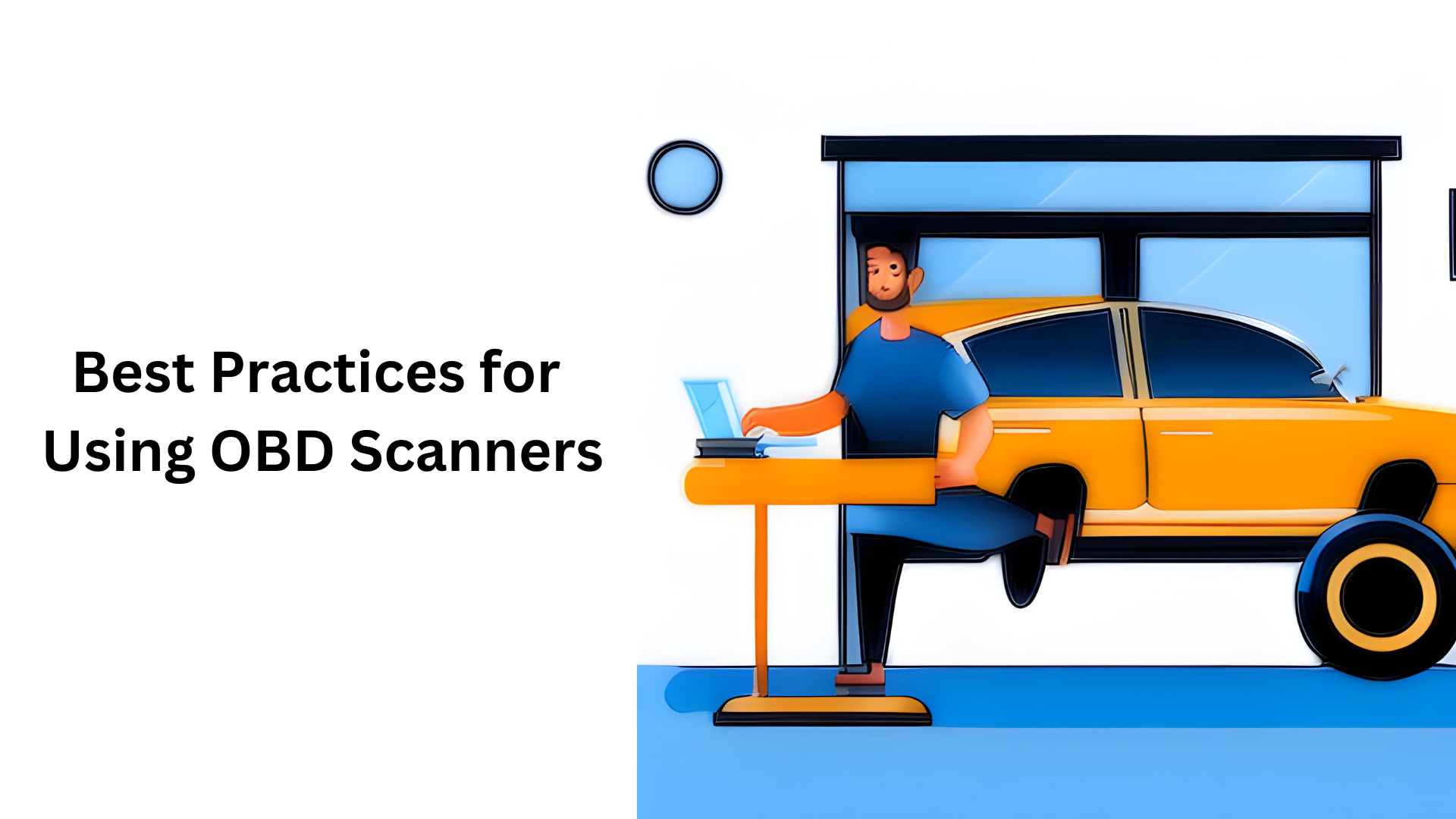Onboard Diagnostics (OBD) scanners have revolutionized the way vehicle diagnostics are performed. These handy tools have made it possible to identify and troubleshoot vehicle issues without the need for costly dealership visits or mechanics. However, not all OBD scanners are created equal, and there are several best practices to consider when using them.
In this article, we will go over some essential and best practices for using OBD scanners.
Table of Contents
Best Practices for Using OBD Scanners

Safety Considerations When Using OBD Scanners
When using an OBD scanner, it is essential to take safety precautions to avoid injury and damage to your vehicle. Here are some tips to consider:
- Always use OBD scanners in a well-ventilated area. Carbon monoxide emissions from your vehicle can be dangerous when inhaled in large amounts.
- Never touch any exposed wires while your vehicle is running. Doing so could result in serious injury.
- Use protective equipment, such as gloves and goggles, when handling potentially hazardous materials.
- Always follow the manufacturer’s instructions when using an OBD scanner. Improper use of the device could result in damage to your vehicle or the scanner.
Tips for Effective Use of OBD Scanners
Here are some best practices to consider when using an OBD scanner:
- Read the owner’s manual before using an OBD scanner. Understanding how the device works and its limitations will help you get the most out of it.
- Use the right OBD scanner for your vehicle. There are several types of OBD scanners available, each with different features and capabilities.
- Connect the OBD scanner properly. Follow the manufacturer’s instructions for connecting the device to your vehicle’s diagnostic port.
- Turn off all accessories before connecting the OBD scanner. This will help ensure accurate readings and avoid false diagnostic codes.
- Clear diagnostic trouble codes (DTCs) after repairs. This will help ensure that the problem has been resolved and avoid future false codes.
Choosing the Right OBD Scanner for Your Needs
There are several types of OBD scanners available, each with different features and capabilities. When choosing an OBD scanner, consider the following:
- Compatibility: Ensure the OBD scanner is compatible with your vehicle’s make and model.
- Features: Look for OBD scanners with features that match your needs, such as the ability to read live data, freeze frame data, and diagnostic trouble codes.
- Price: OBD scanners range in price from under $50 to over $1000. Consider your budget when choosing a scanner.
Maintaining and Updating Your OBD Scanner
To adhere to the Best Practices for Using OBD Scanners, it is crucial to keep your device maintained and updated for accurate readings. Here are some helpful tips to consider to keep your scanner functioning correctly:
- Keep your OBD scanner clean and free from dust and debris. Use a soft, dry cloth to wipe it down regularly.
- Store your OBD scanner in a dry, cool place to avoid damage from moisture and heat.
- Update your OBD scanner regularly. Manufacturers frequently release updates to improve the device’s functionality and compatibility with new vehicle models. Since most modern OBD works with Android and iOS phones. It becomes easy to update them.
Conclusion
In conclusion, following the best practices for using OBD scanners is crucial for diagnosing vehicle issues and maintaining your vehicle’s health. OBD scanners offer a wealth of diagnostic information, and by using them effectively, you can save time and money on repairs. It’s important to take necessary safety precautions, such as disconnecting the scanner before making any repairs and using the right scanner for your vehicle’s make and model. Regularly maintaining and updating your OBD scanner ensures that it remains accurate and reliable, providing you with the best diagnostic information possible. By following these best practices, you can make the most out of your OBD scanner and ensure your vehicle runs smoothly for years.
